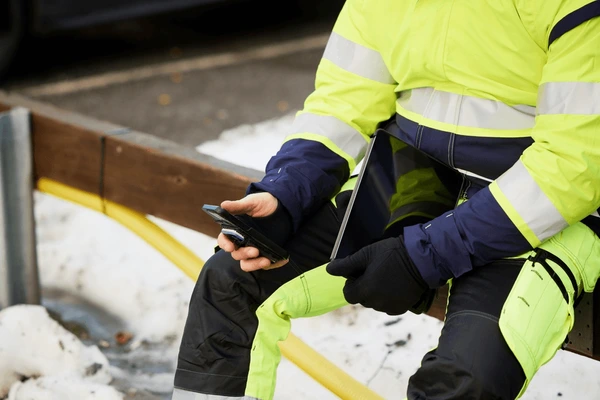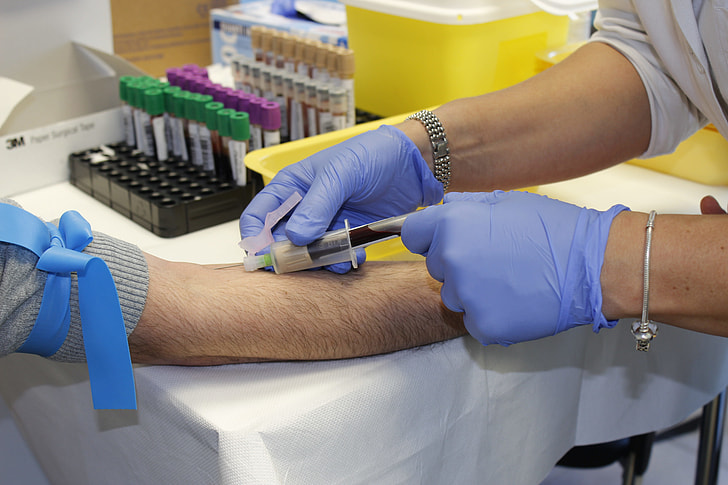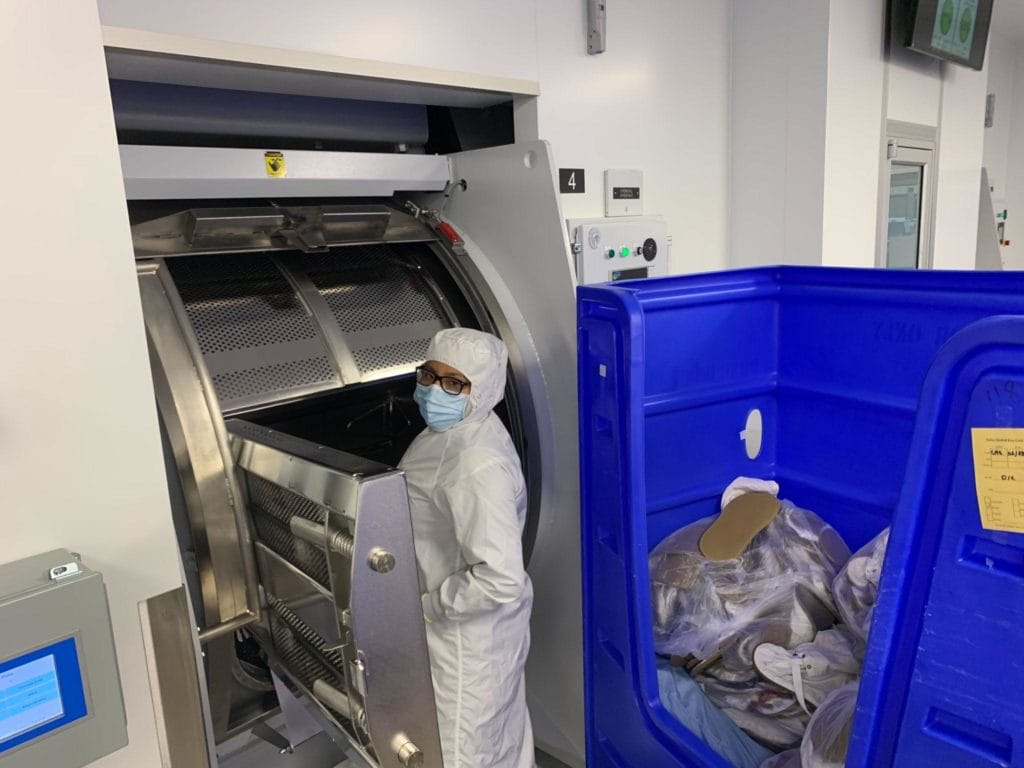
Industrial workwear has entered a new era. With oil-resistant nanocoatings, photocatalytic finishes, and moisture-repellent membranes, companies are now adopting fabrics that self-clean during daily use, significantly cutting washing times and detergent consumption.
This article follows the same structure as the dairy PPE guide, offering technical insights + ROI numbers + procurement guidance, enabling factory owners, procurement managers, and safety supervisors to evaluate whether self-cleaning workwear is worth the investment in their industry.
Google Snippet: Quick Answer
Self-cleaning workwear uses nanotechnology such as hydrophobic coatings, photocatalytic titanium dioxide (TiO₂), and antibacterial silver or copper ions to repel dirt, break down stains, and suppress odor-causing microbes.
Factories adopting these technologies typically report:
- 25–30% lower laundry costs
- 40–60% reduced odor and bacterial growth
- Longer garment service life (1.5–3×)
Common standards include ISO 22196 (antibacterial performance), ISO 14419 (oil repellency), and ISO 15797 (industrial washing durability).
1. Why Self-Cleaning Workwear Matters in Modern Industry
In traditional industrial clothing systems:
- Workwear is easily stained by oil, sweat, blood, chemical residues, airborne dust, food particles, etc.
- Laundering requires large consumption of water, detergent, electricity, labor, and drying time.
- Workers must often rotate 2–5 sets of uniforms, increasing procurement pressure.
Maintenance Cost Has Become a Hidden Burden
In highly labor-intensive operations such as:
- Food processing
- Auto assembly
- Oil and gas
- Maintenance and field services
- Warehousing & logistics
Uniform lifetime cost can exceed 3× the purchasing price, with washing and replacement as the major expense.
The Industrial Shift: Clothing Should Do More by Itself
Companies increasingly want uniforms to:
- Stay clean longer
- Resist stains before they bond to fibers
- Kill bacteria and prevent odor buildup
- Survive harsh industrial washing cycles
- Lower water and chemical consumption
This is where nanotech-based self-cleaning clothing comes in.
2. How Self-Cleaning Workwear Works
Modern self-cleaning technology generally falls into three mechanisms:
2.1 Hydrophobic & Oleophobic Nanocoatings (Lotus-Effect Systems)
- Surface micro-structures mimic lotus leaves
- Dust, oil, water, and dirt cannot anchor firmly
- Particles roll off with movement or light wiping
Used in:
- Logistics uniforms
- Automotive workshops
- Road & rail maintenance
- Light manufacturing
Typical performance test:
ISO 14419 – Oil repellency test.
2.2 Photocatalytic Coatings (TiO₂ Finishes)
Titanium dioxide coatings react with UV or visible light to:
- Break down organic dirt
- Decompose oils
- Destroy bacteria cell walls
- Remove odor compounds (ammonia, sulfur compounds, sweat metabolites)
Advantages:
- Works continuously
- Surface regenerates with light exposure
Common standards:
ISO 27447 – Antibacterial textile evaluation under light activation.
2.3 Antibacterial Metal Ions (Silver, Copper, Zinc)
Silver and copper ions:
- Block bacterial metabolism
- Destroy DNA replication
- Prevent sweat-related odor growth
They do not remove stains, but significantly reduce smell and contamination buildup.
Common standard:
ISO 22196 / JIS Z 2801 – Antibacterial activity measurement.
3. Key Technologies and Their Pros & Cons
| Technology | Mechanism | Advantages | Limitations | Best Use Cases |
|---|---|---|---|---|
| Hydrophobic Nano-Coating | Micro-geometry repels water/oil | Keep garments clean longer, reduces need for washing | May wear off after 30–70 washes unless reinforced | Logistics, automotive, food packaging |
| TiO₂ Photocatalytic Finish | Light-activated decomposition | Deodorizes & breaks organic stains | Requires UV/visible light activation | Outdoor maintenance, warehouse uniforms |
| Silver-Ion Antibacterial | Antimicrobial obstruction | Strong odor suppression | Does not self-remove dirt | Healthcare, food production |
| Copper-Ion Antibacterial | Contact-kill bacteria & virus | Strong, continuous antimicrobial | Can slightly discolor fabric over time | Food, biotech, sanitation |
| Silane/Fluoro Polymer Coatings | Transparent chemical barrier | Industrial-level oil resistance | Environmental compliance required | Heavy machinery, gas & oil |
4. Which Industries Benefit Most?
Food Processing
Challenges:
- Fat, blood, milk, dairy residues
- Strict hygiene requirements
- Daily high-temperature washing
Benefits:
- Reduced odor growth
- Fewer washing cycles
- Less garment damage caused by chemicals
Automotive and Manufacturing
Challenges:
- Oils, lubricants, grease
- Dust in assembly lines
Benefits:
- Workers look cleaner
- Less laundering labor
- Workwear lasts longer
Healthcare and Labs
Challenges:
- High microbial load
- Cross-contamination risk
Benefits:
- Silver- and copper-ion enhancement dramatically lowers bacterial growth
- No chemical disinfectants needed daily
Logistics and Express Delivery
Challenges:
- Outdoor work
- Dirt accumulation during handling
Benefits:
- Workers stay presentable longer
- Lower uniform rotation needs
5. Real-World Case Studies
Case Study #1 – Automotive Assembly Plant (Germany)
Problem
- Workers’ overalls stained daily with lubricants and engine oil
- Required 5 cycles/week industrial laundering
- Fabrics degraded within 7–10 months
Solution
- Transitioned to dual-layer fluoropolymer nanocoating + ripstop cotton
- 120-day durability trial conducted
Results
- Laundering cycles dropped from 5 to 2 per week
- Uniform lifespan increased from 9 months to 22 months
- Company saved €84,000/year in water & detergent
Case Study #2 – Frozen Food Factory (Japan)
Problem
- Aprons and jackets frequently contaminated with dairy lipids
- Bacteria buildup caused odor and negative audit results
Solution
- Replaced every garment with silver-ion and TiO₂ double-coated fabric
Results
- Microbial counts dropped by 72%
- Washing frequency reduced by 31%
- Audit compliance improved without increasing spending
Case Study #3 – Logistics & Delivery Fleet (Canada)
Problem
- Uniform replacement and washing costs rising due to rapid dirt accumulation
Solution
- Hydrophobic nano-repellent finish integrated
Results
- Workers washed garments every 5–7 days instead of every 2–3
- Clothing looking “presentable” for customer-facing tasks increased by 56%
- Total uniform operating cost reduced by 28%
6. ROI Analysis: Cost of Washing vs Cost of Technology
Typical annual costs for a 300-person plant:
Without Nanotechnology
| Item | Annual Cost |
|---|---|
| Industrial detergent | $24,000 |
| Water and heating | $43,000 |
| Laundry labor | $55,000 |
| Garment replacement | $36,000 |
| Total | $158,000 |
With Nanotechnology
| Item | After Upgrade |
|---|---|
| Detergent | $14,300 |
| Water & heating | $28,000 |
| Laundry labor | $21,000 |
| Garment replacement | $20,000 |
| Total | $83,300 |
Savings
$74,700 per year
Typical payback period: 3.5–6 months
7. How Long Do Self-Cleaning Coatings Last?
Durability depends on:
- Base fiber (polyester > cotton in coating adhesion)
- Industrial washing chemistry
- Abrasion exposure
- Coating process type (dip, vapor, plasma bonding)
General Durability Ranges
| Process | Typical Lifespan |
|---|---|
| Basic hydrophobic spray-on | 20–30 industrial washes |
| Fluoropolymer bound coating | 50–120 washes |
| TiO₂ photocatalytic surface | 80–200 washes |
| Silver/copper antimicrobial infusion | Permanent (in fiber matrix) |
8. Frequently Asked Questions (FAQ)
Q1: Do self-cleaning coatings cause skin irritation?
A:
Medical-grade finishes are designed to pass:
- ISO 10993 biocompatibility
- OEKO-TEX Standard 100 chemical restrictions
Skin reactions are extremely rare when using certified materials.
Q2: Do these coatings block fabric breathability?
A:
Modern nanocoatings (20–150 nm) are much thinner than moisture vapor molecules—breathability generally remains intact unless coated excessively.
Q3: Can the coatings be applied to existing uniforms?
A:
Yes, but industrial-scale dip or vapor finishing plants achieve far better durability than spray-on aftermarket products.
Q4: Do these coatings work without sunlight?
A:
Hydrophobic and metallic antimicrobial finishes do.
Photocatalytic TiO₂ requires either:
- Sunlight
- UV emission
- Visible-light-activated doped variants
Q5: Is this “green technology”?
A:
Yes — because it lowers:
- Detergent use
- Water consumption
- Dryer energy
- Microplastic shedding (fewer wash cycles)
9. Procurement Guide – What Buyers Should Verify
9.1 Required Certification and Test Reports
| Performance | Standard |
|---|---|
| Antibacterial inhibition | ISO 22196 / JIS Z 2801 |
| Oil repellency | ISO 14419 |
| Industrial wash durability | ISO 15797 |
| UV/photocatalytic activity | ISO 27447 |
| Eco-safety | OEKO-TEX Standard 100 |
Request batch testing, not only product brochures.
9.2 Questions to Ask Your Supplier
- What is the expected wash-cycle durability?
- What coating method is used?
- Is the technology fiber-embedded or surface-applied?
- Has it passed ISO 15797 industrial wash validation?
- What ROI timeline do similar customers typically see?
- Are service contracts or maintenance plans offered?
9.3 Color and Branding Considerations
Logos, heat transfers, or reflective trims must also be:
- Nano-compatible
- Resistant to industrial washing
- Non-peeling
Nano-surface bonding processes should protect the entire garment, not just the main fabric.
10. Implementation Strategies for Maximum Gains
10.1 Start With a 30-Day Pilot
- Select 40–80 workers
- Choose high-soil job roles
-
Track:
- Wash frequency
- Odor scores
- Stain retention
- Worker comfort feedback
- Garment replacement rates
10.2 Redefine Laundering SOP
Most companies mistakenly continue old washing habits even after upgrades.
Revised SOP might include:
- Lower detergent dosage
- Reduced washing temperature
- No fabric softener (may damage nano-surface)
10.3 Build Worker Ownership
Provide simple messaging:
- “If uniforms are easier to clean — take care of them.”
Employees adopting better practices reduces maintenance load further.
11. Common Deployment Mistakes (and How to Avoid Them)
| Mistake | Impact | Fix |
|---|---|---|
| Treating nanocoatings like regular fabrics | Premature failure | Update laundry SOPs |
| Buying only cheap coatings | Very short lifespan | Ask for ISO 15797 durability |
| Not running a pilot | Hard to get management budget approval | Collect real data first |
| Overlooking logo durability | Peeling branding after 10–20 washes | Use nano-compatible adhesives |
| No cost tracking | No ROI visibility | Compare water + detergent + labor + replacement |
12. Conclusion
Self-cleaning workwear is no longer a futuristic concept — it is already delivering measurable benefits across food processing, manufacturing, logistics, energy, and healthcare.
By adopting nanotechnology-enhanced uniforms, companies can:
- Cut washing loads by 25–35%
- Extend garment lifespan by 1.5–3×
-
Significantly reduce:
- Detergent use
- Water use
- Laundry labor
- Smell and microbial risk
Even conservative implementations produce fast ROI, often within six months.
📩 Want certified nano-coated or antibacterial workwear for your factory?
Email: [email protected]
🌐 www.workwearsolutions.net
Zion Zhang
Recent Posts
 Case Study: Brazilian Food Plant That Adopted Antimicrobial Uniforms2025年11月22日In 2023, a mid-sized Brazilian ready-to-eat (RTE) food […]
Case Study: Brazilian Food Plant That Adopted Antimicrobial Uniforms2025年11月22日In 2023, a mid-sized Brazilian ready-to-eat (RTE) food […] Post-Pandemic PPE: Hygiene-First Workwear for a New Era2025年11月22日The pandemic permanently changed expectations for workplace […]
Post-Pandemic PPE: Hygiene-First Workwear for a New Era2025年11月22日The pandemic permanently changed expectations for workplace […] From Silver Ions to Copper Threads: Comparing Antimicrobial Technologies2025年11月20日Modern food processing and pharmaceutical manufacturing […]
From Silver Ions to Copper Threads: Comparing Antimicrobial Technologies2025年11月20日Modern food processing and pharmaceutical manufacturing […] Antimicrobial Fabrics: The Hidden Hero in Food & Pharma PPE2025年11月20日Food and pharmaceutical production environments demand the […]
Antimicrobial Fabrics: The Hidden Hero in Food & Pharma PPE2025年11月20日Food and pharmaceutical production environments demand the […] Case Study: How a Mining Firm Switched to 100% Recycled Fabrics2025年11月20日A major mining company successfully transitioned from […]
Case Study: How a Mining Firm Switched to 100% Recycled Fabrics2025年11月20日A major mining company successfully transitioned from […] Europe’s Circular Workwear Trend: What Emerging Markets Can Learn2025年11月19日The European workwear industry is increasingly embracing […]
Europe’s Circular Workwear Trend: What Emerging Markets Can Learn2025年11月19日The European workwear industry is increasingly embracing […]
CONTACT US
- Feel free to contact us any time. We will get back to you as soon as we can!
- +86-17303331701
